When I thought of visiting the Budapest Opera, I didn’t expect much. I am not an opera buff, nor did I know much about Hungarian musical history. I only knew that the building was beautiful on the outside and that, for the price of a museum ticket, I could peek inside one of the most famous theatres in Central Europe. What I didn’t know was that this visit – short, guided, without a full performance – would end up teaching me more about Budapest’s cultural history than any monument in the city.
The first impression: the fachade on Andrássy Avenue
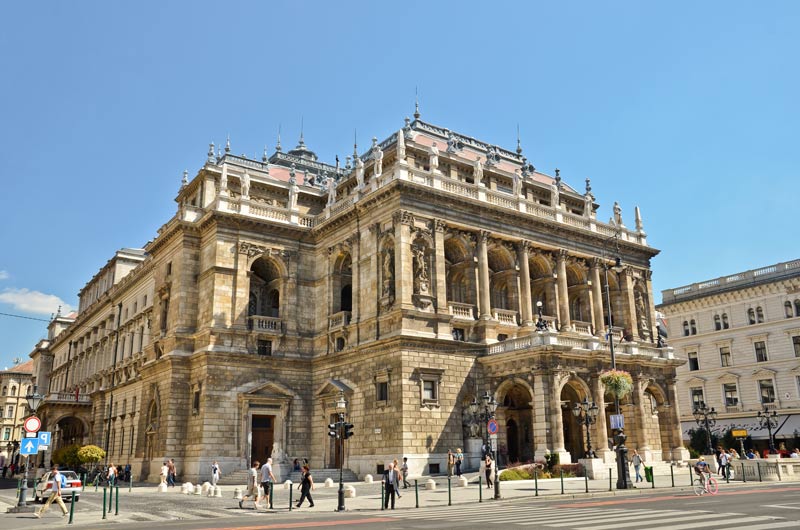
Located on the majestic Andrássy Avenue, the Hungarian State Opera presents itself with a neo-Renaissance façade that commands respect. As I approached, I was impressed by the elegance of its architectural details: sculptures of famous composers, such as Franz Liszt and Ferenc Erkel, guard the entrance, inviting visitors on a musical journey. The avenue, with its Parisian air, adds an extra charm, making the arrival at the building a perfect prelude to what is to come.
The foyer: a portal to the past
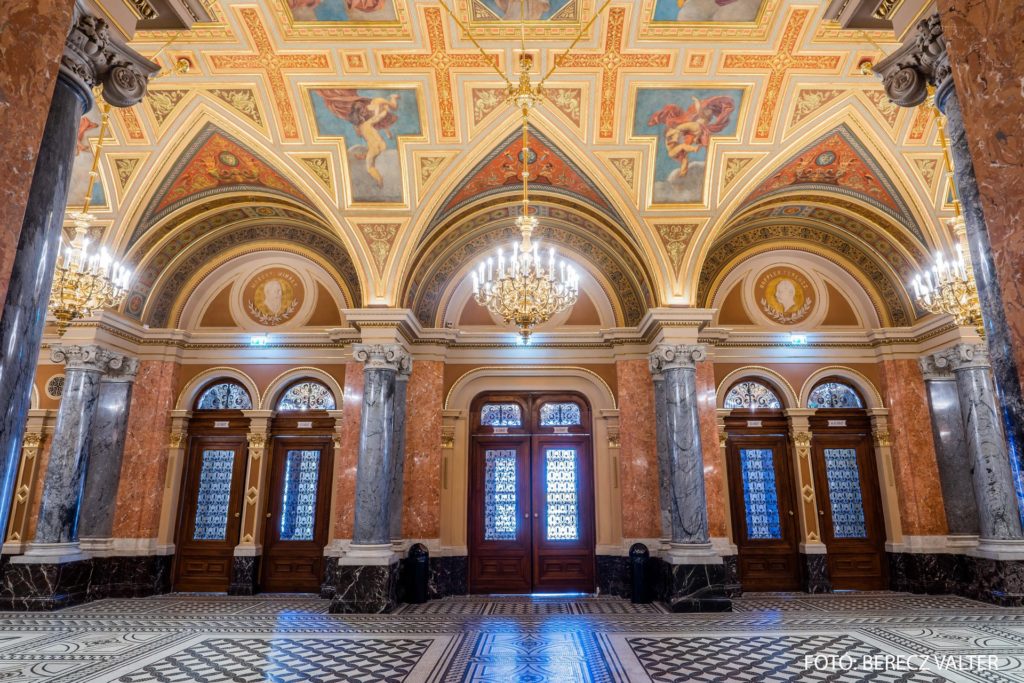
As I crossed the threshold, the foyer greeted me with breathtaking opulence. Marble columns, gleaming chandeliers and intricately patterned floors created an atmosphere of nineteenth-century luxury. It was as if time had stood still, and I could imagine the attendees of yesteryear, dressed in their finery, preparing for a night at the opera. This space, described by many as a reflection of ‘old world luxury’, set the tone for the rest of the tour.
The grand staircase: history on every step
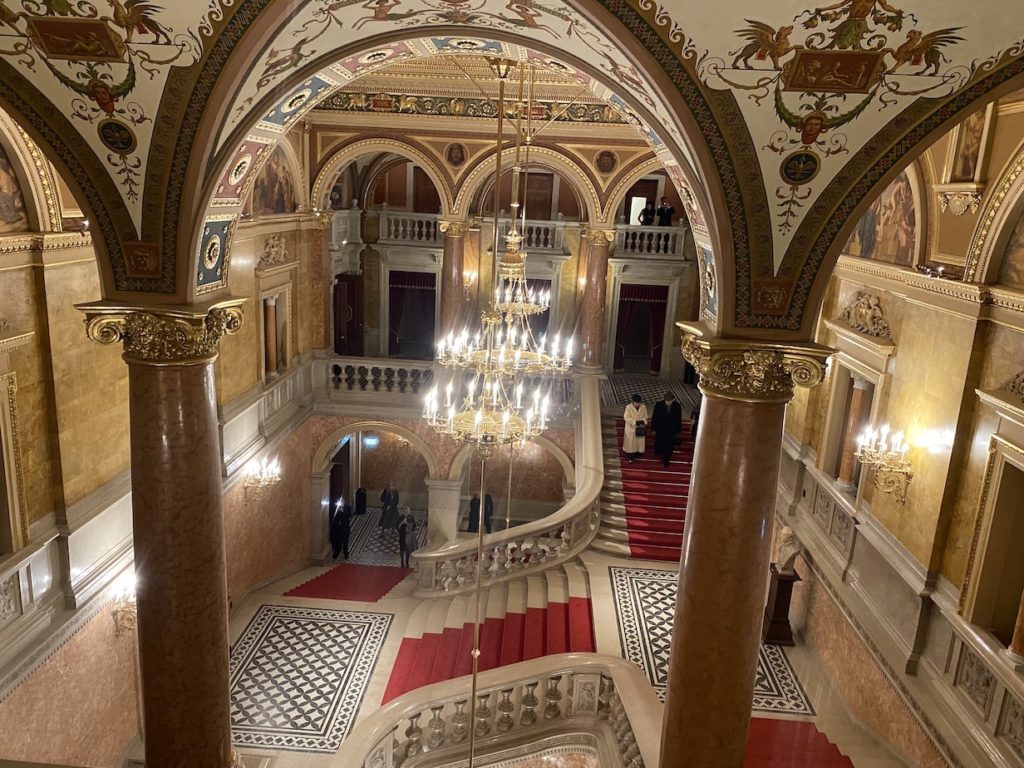
Our guide led us up the grand staircase, covered with a red carpet that added a touch of royalty to our ascent. Along the way, we paused to admire the architecture and listen to fascinating tales of the building’s history. Designed by renowned architect Miklós Ybl, the Opera House took nine years to build and was completed in 1884. A curious anecdote shared by the guide was that Emperor Franz Joseph I, who partially financed the project, demanded that the Opera House be no larger than the one in Vienna. Although it is slightly smaller, many consider it to surpass its Viennese counterpart in beauty, a sentiment I shared as I contemplated the ornate details.
Prestigious salons: the Royal Salon and the Red Salon
We continued on to the Royal Hall, a space reserved in the past for royalty and their guests. The walls, adorned with portraits of famous Hungarian opera singers, seemed to tell stories of legendary performances. Next, we visited the Red Room, a VIP lounge with elaborate decorations evoking the grandeur of high society. I imagined attendees from bygone eras, enjoying champagne and discussing the arts in this luxurious setting. These lounges, described as ‘a feast for the eyes’ (Bright Nomad), added a layer of historical intimacy to the tour.
The auditorium: a temple of music
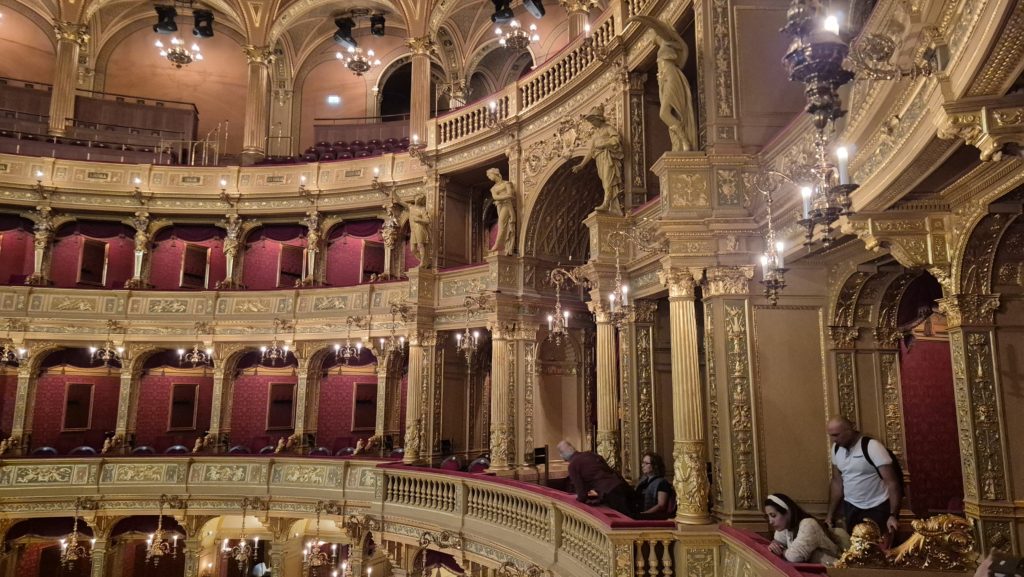
The highlight of the tour was the entrance to the auditorium, a horseshoe-shaped space that is a masterpiece of design. With its red and gold colour palette, the auditorium radiates warmth and elegance. A monumental chandelier hangs from the ceiling, casting a soft glow over the seats. Our guide informed us that this 1,261-seat auditorium has the third best acoustics in Europe, second only to La Scala in Milan and the Palais Garnier in Paris (Wikipedia). Although I was unable to attend a full performance, being in this hallowed space was enough to appreciate its magnificence. Some visitors have noted that occasional renovations can limit access to the auditorium (TripAdvisor), but I was fortunate enough to experience it in its full splendour.
The mini-concert: a touch of operatic magic
The tour culminated with a delightful surprise: a mini-concert on the grand staircase. Two opera singers, dressed in period costumes, performed popular arias accompanied by recorded orchestral music. Their voices echoed in the space, taking advantage of the exceptional acoustics of the venue, and filled the air with emotion and melody. This brief but unforgettable performance, which lasted between 5 and 15 minutes according to the reviews (Budapest by Locals), was the highlight of the experience, offering a glimpse of the magic that defines the Hungarian State Opera.
Final reflections
The guided tour of the Hungarian State Opera is, without a doubt, a must-do experience for any visitor to Budapest. In just one hour, it combines history, architecture and live music, offering a deep dive into Hungary’s cultural heritage. Although some have reported organisational problems, such as large groups or difficulty listening to the guide (TripAdvisor), my experience was flawless, thanks to an informative guide and a well-managed group. I highly recommend this tour, especially for those unable to attend a full opera or ballet performance. It is a unique opportunity to explore one of the most beautiful opera houses in Europe and take away an indelible memory of Budapest.
Tips for future visitors
- Book in advance: The tours are popular, and booking in advance ensures your place, especially in high season.
- Arrive early: This will allow you to enjoy the lobby and take photos before the tour begins.
- Check on the status of renovations: Check if the auditorium will be accessible, as construction may affect the experience.
- Bring headphones if possible: In the case of large groups, they may help you hear the guide better, although not all tours provide them.
For more information check this article.

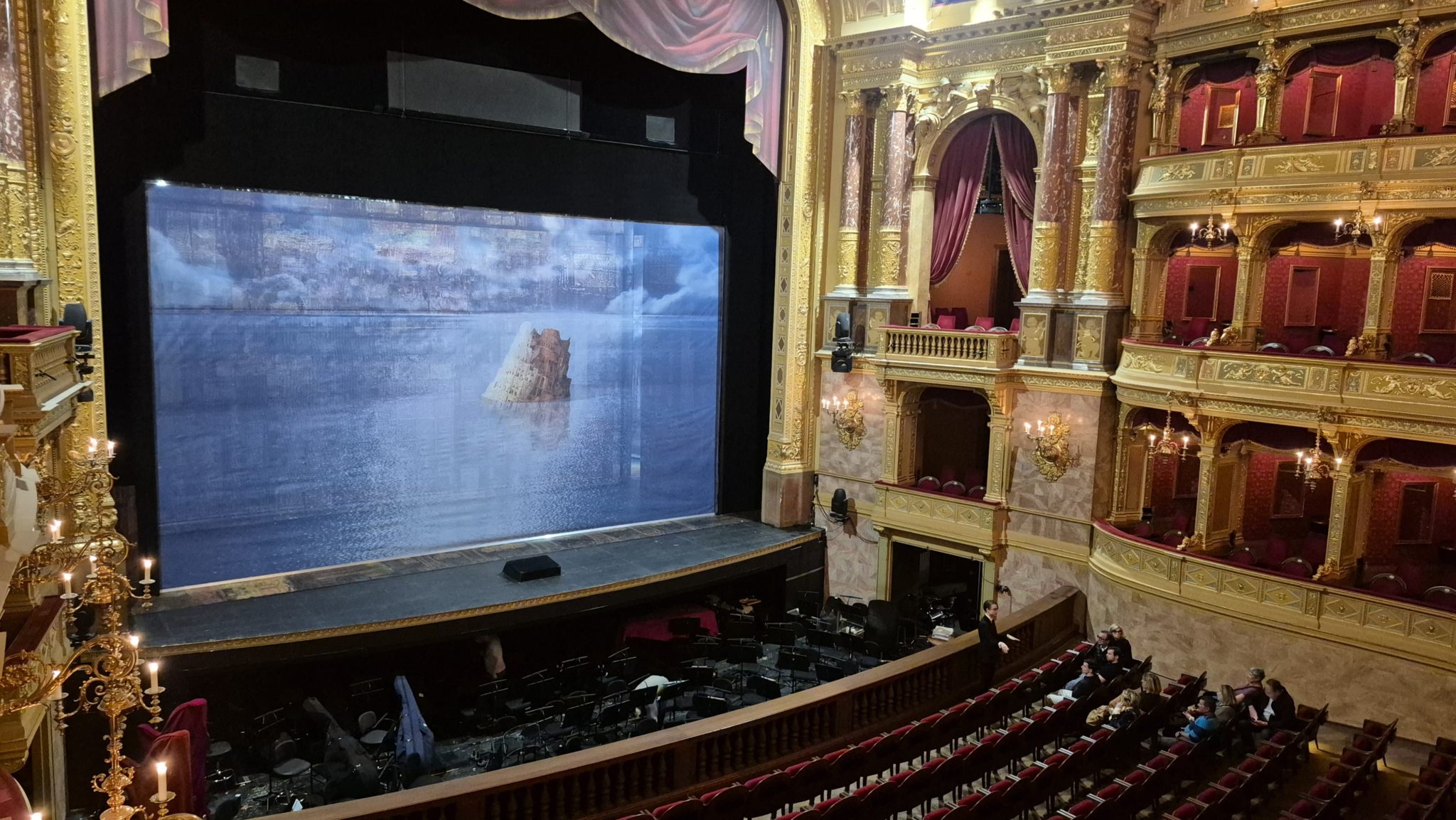
Comments are closed.